The Secret Life of The Green Wolf Eel | Saltwater Specie
Published: 27 Feb 2024
Get ready to dive into the fascinating world of the wolf eel. In this blog, we explore the untold secrets of the green wolf eel. The wolf eel is a saltwater species and stands out as a marvel of nature.
Are you curious to learn about the untold secrets and aquarium care guide for wolf eels? You’re at the right place. Here, we discover all the nuances of the wolf eel.
Let’s get started and explore!
What is a Green Wolf Eel?
The Green Wolf eel is a brownish fish with a green color, and its elongated body resembles that of an eel. The wolf eel is a marine fish scientifically known as “Anarhichadidae Ocellatus” and belongs to the “Wolffish” family.
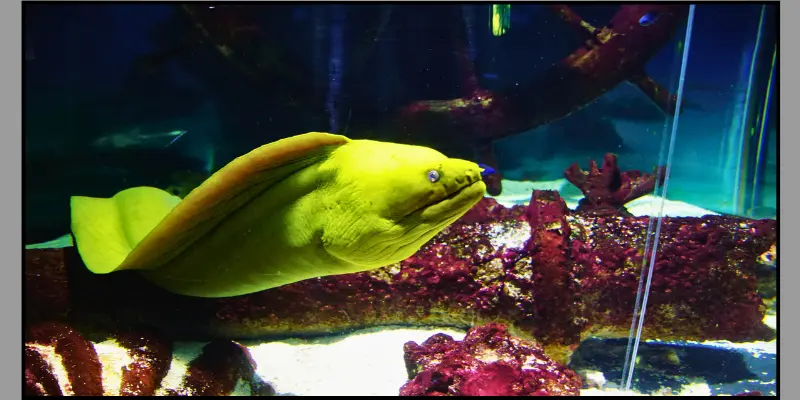
Common Names
Wolf eels are referred to by various names in different countries. Some of the different names for wolf eels are listed below:
- Wolf eel
- Carpet conger
- Eel Blenny
- Greenling
- Giant Wolf eel
- Eared eel
- Mud Blenny
- Seawolf
Weight and Size
The weight and size of a wolf’s eel depend on various factors such as diet, age, water conditions, and environmental factors. Typically, adult wolf eels measure between 1.5 feet to 2 feet (18 to 24 inches) in length and weigh between 5 to 10 kilograms.
It’s important to note that there are different categories and species of green eels distributed worldwide. There are approximately 800 different species of eels belonging to various families and genera.
Lifespan and Reproduction
The wolf eel is a stunning species, and its lifespan varies depending on factors such as proper care and environmental conditions. In the wild, wolf eels have a longer lifespan compared to many other fish species, living up to 22 to 25 years. In captivity, they typically live slightly shorter lives, ranging from 18 to 20 years.
The reproductive process of wolf eels is unique. These species reach sexual maturity at around 5 to 6 years of age. During the winter spawning season, male and female eels engage in courtship rituals to pair up for spawning.
The female eel releases her eggs, which can number up to 10,000 at a time. The male eel then fertilizes these eggs externally. The male eel guards the eggs until they hatch, which typically takes 3 to 4 weeks. After hatching, the larvae enter a larval stage, beginning the next phase of their development.
Aquarium Care Guide for Wolf Eels
The green wolf eel is a saltwater species. If you’re considering keeping a wolf eel in captivity, there are several essential tips to keep in mind. Let’s explore some key considerations for successfully caring for wolf eels in captivity.
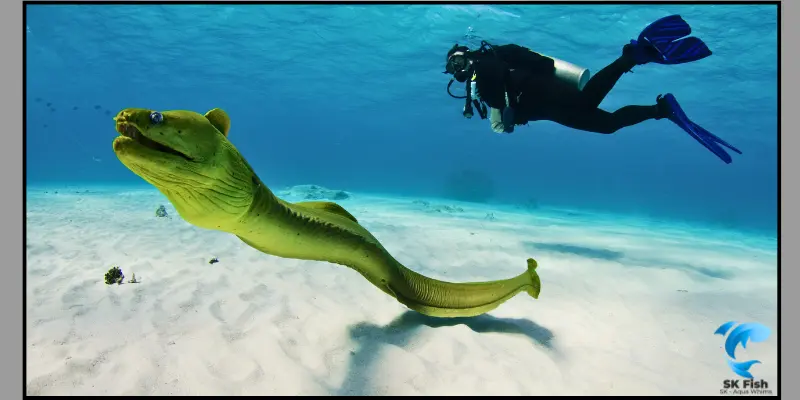
Tank Size
Green wolf eels are sizable creatures and require a spacious tank. The minimum tank size recommended for wolf eels is 100 gallons, as these species need ample space for swimming and exploring. If you plan to house other tank mates with your eel, larger tank sizes are preferable.
Tank Decor for Eels
Tank decoration is crucial for creating the ideal environment for wolffish. Craft a natural habitat by using fine sand as a substrate to mimic their natural surroundings. Avoid sharp substrates that may cause injury. Incorporate live rocks to provide hiding spots and create a more naturalistic environment. Additionally, consider adding artificial plants to further enhance the resemblance to their wild habitat.
Water Parameters
Cool and oxygenated water is essential for the well-being of wolf eels. Regular water testing is crucial to maintain optimal conditions, with water temperatures ideally between 60 to 70°F and a pH level ranging from 7.9 to 8.4. It’s important to create water movement in the tank to ensure adequate oxygenation.
Performing regular water changes of 15% to 25% every 2 weeks is recommended to remove impurities and maintain water quality. Additionally, clean the aquarium glass regularly and ensure proper water flow to prevent the buildup of debris.
Tank Mates
While green wolf eels can be territorial and aggressive, especially towards other eels, selecting tank mates carefully is essential. Choose non-aggressive and calm species to coexist peacefully with wolf eels. Below are some suitable tank mates to consider:
Diet for Eels
Eels are carnivorous species that require a proper diet. A varied diet for wolf eels should consist of meaty foods such as:
| Diet |
|---|
|
Maintain a consistent feeding schedule and avoid overfeeding. Feed adult eels 2 to 3 times per week. Adjust the feeding amount based on the size of the eels to ensure they receive adequate nutrition.
Common Disease for Wolf Eels
Green wolf eels are hardy creatures but, like other fish, they are susceptible to common diseases. Below are some of the most common diseases that may affect green wolf eels:
| Disease Names |
|---|
|
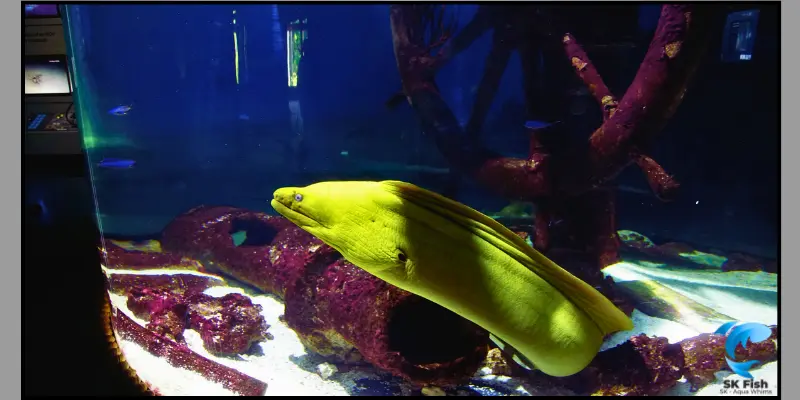
Habitat and Distribution
Contrary to popular belief, green wolf eels are not real; they are a species of dottyback. Wolf eels typically inhabit cold environments and prefer areas with abundant rock formations, providing ample hiding spots. These creatures can be found in various habitats, including rocky reefs, coral reefs, brackish estuaries, and crevices.
Green wolf eels have a wide distribution, spanning the coastline of North America from Alaska in the north to California in the south. They can be found at depths of up to 900 feet in the ocean. However, their distribution is primarily limited to colder regions.
Conclusion
In this summary, we have explored essential information about the underwater species known as the Green Wolf Eel. Throughout this blog, we’ve uncovered various aspects including their different names, weights, sizes, lifespans, reproduction habits, aquarium care guides, common diseases, suitable tank mates, dietary preferences, habitat requirements, and distribution patterns. We hope this journey has enlightened you about the fascinating facts surrounding these remarkable creatures. Feel free to share your feedback in the comments section.
FAQs
How big do green wolf eels get?
The size of each green wolf eel can vary depending on factors such as diet, care, age, and species. The maximum size observed for green wolf eels is typically around 18 to 24 inches.
Can I keep a wolf eel as a pet?
Yes, wolf eels can be kept as pets, but they require a large tank, ideally around 100 to 125 gallons. It’s important to note that they are aggressive species, so it’s best to avoid keeping them with smaller fish, as wolf eels may prey on them.
Are green wolf eels are reef safe?
Yes, green wolfes are considered reef-safe in larger aquariums that provide ample hiding places and meet their habitat requirements. Factors such as tank mates, behavior, and feeding also play important roles in ensuring their compatibility with reef environments.
Are wolf eels aggressive?
These species are known to be territorial and aggressive towards other eels. Providing ample hiding places can help reduce their stress and aggression levels. In captivity, they can coexist comfortably with other peaceful and calm species.

SK Fish is your trusted source for practical fish care tips and delicious seafood recipes. Our team is dedicated to providing reliable, well-researched content for fishing enthusiasts and home cooks alike.

- Be Respectful
- Stay Relevant
- Stay Positive
- True Feedback
- Encourage Discussion
- Avoid Spamming
- No Fake News
- Don't Copy-Paste
- No Personal Attacks



- Be Respectful
- Stay Relevant
- Stay Positive
- True Feedback
- Encourage Discussion
- Avoid Spamming
- No Fake News
- Don't Copy-Paste
- No Personal Attacks
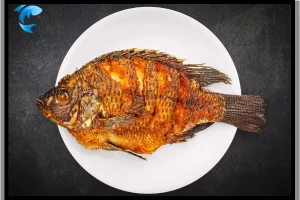
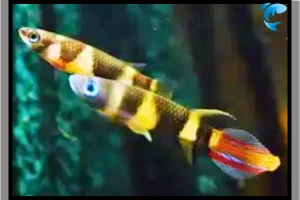
![Discover the Truth: How Long Does It Take for Guppies to Breed? [Expert Tips Inside]](https://skfish.com/wp-content/uploads/guppy-how-to-breed-200x133.webp)
![The 7 Best Freshwater Fish for Low Light Tanks [Hassle-Free Setup and Maintenance]](https://skfish.com/wp-content/uploads/best-freshwater-fish-for-low-light-tanks-200x133.webp)
![How to Set Up a Freshwater Fish Tank in 5 Easy Steps [No Experience Needed, Avoid Common Pitfalls]](https://skfish.com/wp-content/uploads/how-to-set-up-a-freshwater-fish-tank-in-5-easy-steps-200x133.webp)
